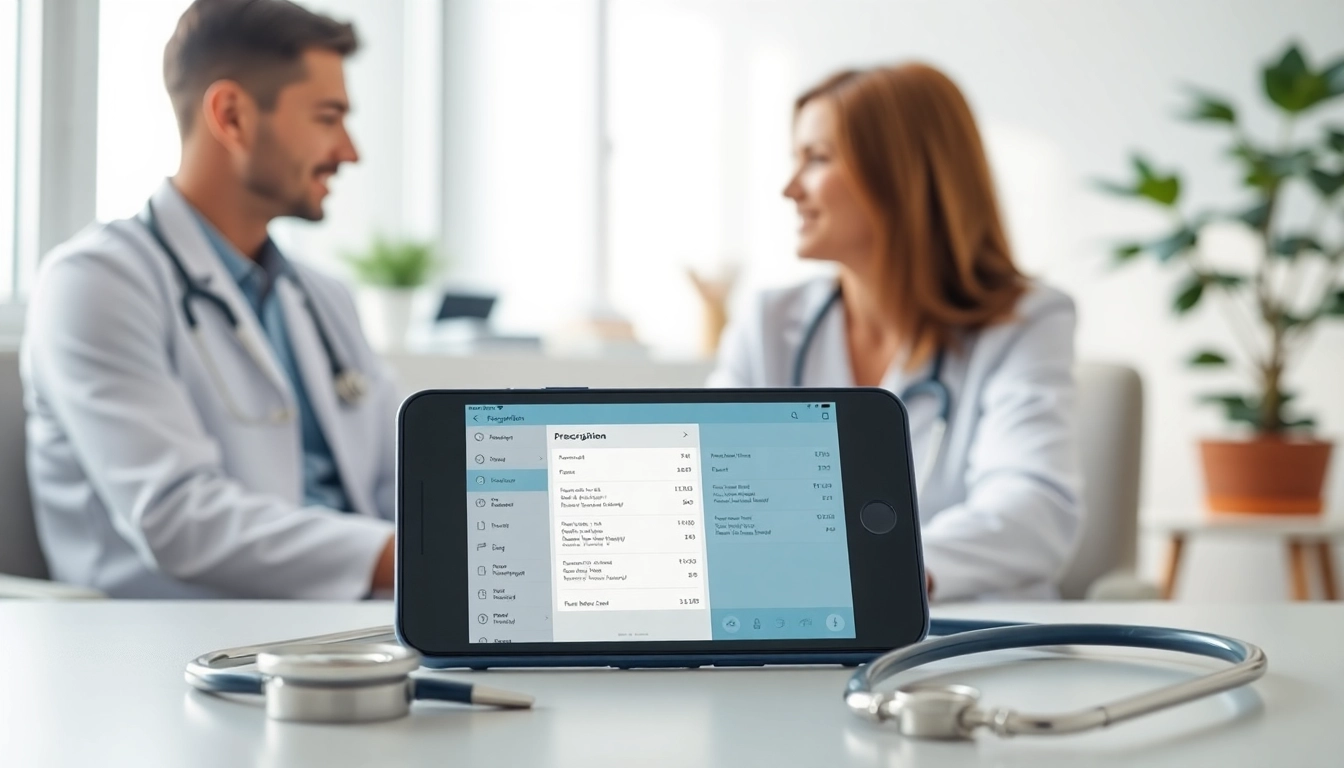Understanding Integrating Eprescribing Systems
In the evolving landscape of healthcare, the digitization of processes has become paramount, particularly concerning prescription practices. Integrating eprescribing systems forms a critical component of modernizing pharmaceutical care, enabling healthcare providers to enhance patient safety, reduce medication errors, and streamline workflows. The shift towards electronic prescribing integrates seamlessly within the broader healthcare IT ecosystem, facilitating better coordination of care. This article explores the nuances of integrating eprescribing systems, focusing on their components, benefits, challenges, best practices, and future trends.
Definition and Components of Eprescribing Systems
Eprescribing refers to the electronic transmission of prescriptions from a healthcare provider to a pharmacy. Unlike traditional paper-based methods, which are often susceptible to errors, eprescribing utilizes software systems designed to enhance accuracy and efficiency. The key components of an eprescribing system typically include:
- Prescription Management Software: This is the core of an eprescribing system, designed for creating, managing, and transmitting prescriptions electronically.
- Pharmacy Interfaces: These ensure that prescriptions can be sent directly to pharmacies, providing real-time updates on medication availability.
- Patient Medication History: This feature allows prescribers to access a patient’s historical medication data, minimizing the risk of adverse drug interactions.
- Decision Support Tools: Integral to enhancing patient safety, these tools may alert providers to potential drug interactions, allergies, or contraindications.
Benefits of Integrating Eprescribing Systems
A multitude of benefits arises from successfully integrating eprescribing systems into healthcare practices. These advantages extend beyond mere convenience; they significantly impact patient care and operational efficiency:
- Improved Patient Safety: By reducing errors associated with handwritten prescriptions, eprescribing minimizes the risk of medication misunderstandings.
- Increased Efficiency: Healthcare providers can process, sign off, and send prescriptions in a fraction of the time compared to traditional methods.
- Enhanced Patient Engagement: Patients can participate in their healthcare by receiving electronic prescriptions and medication reminders via mobile apps and systems.
- Reduction in Prescription Fraud: Digital prescriptions are harder to alter than handwritten ones, thus reducing the potential for fraudulent activities.
Challenges in Integrating Eprescribing Systems
Despite the numerous benefits, integrating eprescribing systems is not devoid of challenges. Understanding these obstacles is crucial for healthcare providers willing to embrace this technology.
Technical Barriers to Successful Integration
One of the primary challenges in integrating eprescribing systems is technical compatibility. Many healthcare facilities utilize various electronic health record (EHR) systems, which can complicate interoperability. Integrating improved eprescribing functionalities into existing systems requires:
- Standardized Protocols: Utilizing common communication protocols such as HL7 for data exchange can ease interoperability.
- Comprehensive Testing: Conducting thorough testing across different systems to ensure seamless communication between the eprescribing software and existing EHRs.
- Up-to-date Software: Keeping software updated to guard against vulnerabilities and ensure compatibility with new technologies.
Overcoming Resistance from Healthcare Staff
Implementing any new technology often meets resistance from staff accustomed to traditional methods. To overcome this, healthcare organizations can:
- Involve Staff in Decision-Making: Engaging healthcare professionals in the selection and implementation processes fosters ownership and acceptance.
- Clear Communication: Outlining the benefits of the new system allows staff to understand how it will improve their workflows and patient care.
- Continuous Feedback Mechanism: Establishing feedback channels enables staff to voice concerns and suggestions post-implementation, fostering a culture of improvement.
Ensuring Data Security and Compliance
As with any technological integration within healthcare, data security and compliance with regulations such as HIPAA are paramount. Ensuring the safeguarding of sensitive patient information necessitates:
- Encryption: Implementing robust encryption techniques during data transmission to prevent unauthorized access.
- Regular Audits: Conducting regular audits on data access and system usage to ensure compliance with established policies.
- Training Programs: Providing staff with training on data handling practices and the importance of safeguarding patient information.
Best Practices for Integrating Eprescribing Systems
When embarking on the journey to integrate eprescribing systems, adhering to best practices can significantly enhance the likelihood of successful implementation.
Assessing Current Systems and Needs
Before integrating new eprescribing technology, conducting a comprehensive assessment of current systems and identifying specific needs is vital. This step should include:
- Evaluating Existing EHRs: Understanding the capabilities of the current EHR systems and identifying any gaps that may be addressed with new software.
- Gathering Stakeholder Input: Consulting with practitioners, pharmacists, and administrative staff to gather insights on what functionalities would be beneficial.
- Identifying Workflow Inefficiencies: Analyzing patient flow and prescription processes to pinpoint areas needing improvement through technology.
Steps for Effective Implementation
To implement an eprescribing system effectively, certain strategic steps can be taken:
- Develop a Clear Implementation Plan: Establishing clear objectives, timelines, and key performance indicators will provide direction throughout the integration process.
- Choose the Right Vendor: Partnering with a reputable vendor that offers comprehensive support and training can help streamline the integration process.
- Conduct Pilot Testing: Implementing the system in a controlled environment first allows for troubleshooting and adjustments before full-scale deployment.
Training Staff for Seamless Transition
Comprehensive training programs are crucial for ensuring all staff are equipped to use the new eprescribing system effectively. Key strategies include:
- Hands-On Training Sessions: Providing hands-on workshops can ease the transition, allowing for practical experience with the new system.
- Creating User Manuals and Resources: Developing clear, accessible documentation enables staff to refer back as necessary, increasing confidence in system usage.
- Establishing Super User Roles: Designating select staff members as ‘super users’ fosters peer support and can aid in troubleshooting during the early stages of integration.
Measuring the Impact of Integrating Eprescribing Systems
It is vital to assess the effectiveness of integrated eprescribing systems continually. Measuring impact helps healthcare organizations refine their operations and maximize the benefits of this technology.
Performance Metrics to Evaluate Success
Identifying key performance indicators (KPIs) will help measure the success of the integrated system. Some potential metrics include:
- Prescription Error Rates: Tracking the number of prescription errors before and after implementation indicates improvements in accuracy.
- Time Spent on Prescription Management: Measuring workflow efficiency can assess reductions in time spent processing prescriptions.
- Patient Satisfaction Scores: Surveys can gauge patient experiences and satisfaction levels regarding the new prescribing process.
Patient Outcome Improvements
The ultimate objective of integrating eprescribing systems is to enhance patient outcomes. Data should be collected to analyze:
- Medication Adherence Rates: Monitoring whether patients are filling and adhering to prescribed medications post-implementation.
- Hospital Readmission Rates: Tracking changes in readmission rates may indicate the effectiveness of proper medication management.
- Reduction in Adverse Drug Events: Analyzing the incidence of adverse drug events before and after adopting eprescribing could provide insight into safety enhancements.
Cost-effectiveness of Integrated Systems
Integrating eprescribing systems not only aims to improve patient care but must also demonstrate financial viability. Cost-effectiveness can be assessed through:
- Reduction in Administrative Costs: Evaluating decreases in manual processing time and associated human resource costs.
- ROI on Technology Investment: Analyzing the return on investment by comparing the costs involved in implementation against long-term savings and efficiencies.
- Impact on Prescribing Patterns: Looking at any shifts in prescribing patterns that may lead to cost savings in medications or therapeutic approaches.
Future Trends in Integrating Eprescribing Systems
The future of healthcare appears promising with the continued evolution of integrating eprescribing systems. Several trends stand to shape how these systems will influence healthcare delivery moving forward.
Advancements in Technology and Innovation
Emerging technologies such as artificial intelligence (AI) and machine learning (ML) are set to play a significant role in the future of eprescribing. Potential advancements include:
- Predictive Analytics: Utilizing AI algorithms to predict patient adherence and potential drug interactions could support prescribers in personalized medication management.
- Natural Language Processing (NLP): Leveraging NLP in eprescribing can refine entry processes, allowing for more intuitive input methods.
- Mobile Integration: Enhanced mobile capabilities will enable patients to manage prescriptions more conveniently, further promoting adherence.
Integration with Other Healthcare Solutions
The future will likely see tighter integration of eprescribing systems with other healthcare technologies, enhancing overall patient management through seamless data exchange. Examples include:
- Electronic Health Records (EHRs): Full integration ensures that prescription data flows effortlessly between prescribing and patient record systems, minimizing discrepancies.
- Telehealth Platforms: As telehealth continues to expand, combining remote consultations with eprescribing capabilities will streamline in-person and remote patient care.
- Pharmacy Management Systems: Streamlining communications with pharmacy systems for real-time tracking of medication dispensation and refills.
Predictions for Eprescribing in Patient Care
Looking ahead, the role of eprescribing in patient care is expected to expand considerably, leading to improved health outcomes and enhanced patient engagement:
- Greater Patient Empowerment: Patients will increasingly engage with their health data and management through integrated apps and portals, promoting more informed decisions.
- Data-Driven Decision Making: Widespread access to comprehensive data analytics will guide clinicians in making informed prescribing decisions tailored to individual patient needs.
- Holistic Patient Management: Eprescribing will likely become a core aspect of a broader patient management strategy, focusing not just on medications but overall health and wellness.



